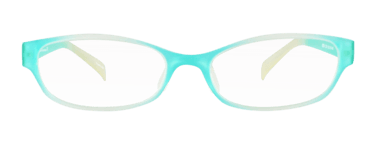Interesting Facts
Did you know that:
- 80% of all information you absorb comes through your eyes?
- 1 in 4 kids have vision problems?
- 60% of computer users suffer from visual fatigue?
- In the car, polarized sunglasses reduce glare, and may allow faster reaction times, which at 80 km/h would allow you to reduce your stopping distance by as much as 7 meters.
- More than two thirds of all lenses sold in North America do not have anti-reflection coating. (50% in Europe).
- Half of all lenses sold worldwide do not provide protection against harmful UV rays.
- As much as 30% of all plastic and high index glasses have not been hard coated for protection against scratches.
- 75% of people with prescription glasses do not have prescription sunglasses.
- Eye tests can help detect diseases like AMD*, diabetes and hypertension. (*Age-related macular degeneration).
- In China, 18 million babies are born each year. More than 10 million of them will need glasses by the time they are 18 years old.
- The use of progressive glasses has increased by 250% in the past 30 years. And the use of bi-focal and tri-focal continues to decline.
- The use of glass lenses has declined by 74% in the past 30 years, as plastic and monomer resin materials have gained in popularity.
- Tinted and polarized sunglass lenses represent less than 15% of the total prescriptive lenses sold around the world.
- Almost 2.5 billion people worldwide live with an uncorrected vision problem.
- Your eyes are composed of more than 2 million working parts.
- We all have microscopic creatures lurking in our eyelashes.
- Most colorblind people do see color, but often confuse similar shades in certain conditions.
- Approximately 8% of males are colorblind, compared to only 0.5% of females. This is because the genes involved in color vision are on the X chromosome. Men only have 1 X chromosome, which means if their X chromosome is defective, they will be colorblind. Women have to have 2 defective X chromosomes in order to display the mutation.
- Only 1/6th of your eyeball is visible to the world.
- The muscles in your eyes are 100 times more powerful than they need to be. This makes them, relatively speaking, the strongest muscles in your body.
- Your eyelashes help distribute the tears that are formed to prevent your eye from drying out.
- We blink about 12 times a minute. That is 10,000 blinks per day!
- Your nose and ears never stop growing, but our eyes are the same size from birth.
- As we get older, tear production slows. This is why dry eyes are more common among the elderly.
- Your eyes are the most complex organs you possess, except for your brain.
- The eyes themselves are the only part of the human body that can function at 100% at any moment, without rest. Your eyelids and external muscles of your eyes, however, do need rest.
- Eyelashes have an average life span of 5 months.
- The eyeball weights 28 grams on average.
- People generally read 25% slower from a computer screen than from paper.
- Generally, men are able to read fine print better than women.
- Sneezing with your eyes open is a physical impossibility.
- The space between your eyebrows is called the glabella.
- Your retina contains 120 million rods for night vision.
- Your retina contains 8 million color sensitive cones that work best under daylight conditions.
- Approximately half our brain is involved in the seeing process.
- Under the right conditions, the human eye can see the light of a candle at a distance of 14 miles.
- An eyeball is about 1 inch (2.5 cm) in diameter.
- All babies are colorblind when born.
- Babies don’t produce tears in their eyes until they are 1 to 3 months old.
- A giant squid has the largest eyeball in the world: 18 inches wide (which is the size of a large watermelon).
- Dogs can’t tell the difference between red and green.
- An ant has 2 compound eyes: each eye contains many smaller eyes.
- A shark cornea and a human cornea are similar enough that it has been used in human surgery.
- A cat’s eyes offer almost 285 degrees of sight in three dimensions.
- The phrase, "It's all fun and games until someone loses an eye" is from Ancient Rome. The only rule during wrestling matches was, "No eye gouging." Everything else was allowed, but the only way to be disqualified was to poke someone's eye out.
- The eye cannot be transplanted. It is connected to the brain by the optic nerve, which cannot be reconnected once it has been severed. The cornea - the clear front part of the eye - can be transplanted. Surgeons often use plastic intraocular lens implants (IOLs) to replace natural lenses removed during cataract surgery.
- Although reading in dim light can make your eyes feel tired, it is not harmful.
- Children do not outgrow truly crossed eyes. A child whose eyes are misaligned has strabismus and can develop poor vision in one eye (a condition known as amblyopia) because the brain turns off the misaligned or lazy eye. The sooner crossed or misaligned eyes are treated, the less likely the child will have permanently impaired vision.
- Potentially blinding eye infections can result from swimming or using a hot tub while wearing contact lenses.
- Safety goggles prevent many potentially blinding injuries every year. Keep goggles handy and use them!
- An eagle can see a rabbit about 1 mile or 1760 yards away. The average person needs to be about 550 yards away to see the same rabbit.
- The “gunk” in the corner of your eyes when you wake up in the morning has no special name. Since you sleep with your eyes closed, your eyelashes aren’t wiping away stuff that goes into your eyes, thus making the stuff collect in the corners of your eyes.
- Polycarbonate lenses have been around since the space age. As applies to Apollo's computers, there are much better products available nowadays. Try Trivex or TVXi.
Recommended for you












